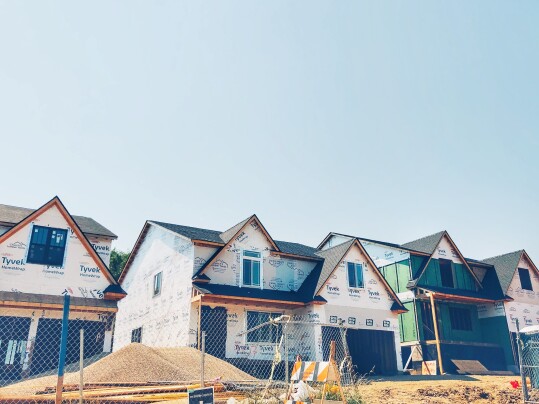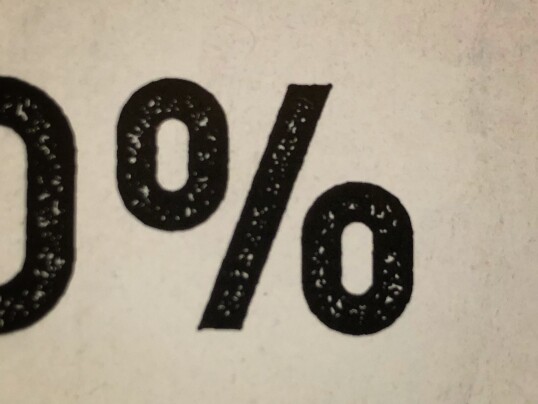According to the Mortgage Bankers Association’s Weekly Applications Survey, demand for loans to buy homes was up for the first time in five weeks last week. In fact, the MBA’s purchase index improved 2 percent week -over-week. Increased demand from home buyers combined with a 3 percent gain in refinance activity to push overall mortgage application demand 2.3 percent higher than the week before. Joel Kan, MBA’s vice president and deputy chief economist, says application demand still remains lower than last year, despite the increases. “Mortgage applications for home purchases and refinances increased for the first time in five weeks but remained at low levels,” Kan said. “Purchase applications increased but were still 27 percent lower than a year ago, as elevated mortgage rates and tight housing inventory continue to weigh on home buying activity.” The MBA’s weekly survey has been conducted since 1990 and covers 75 percent of all retail residential mortgage applications. (source)
Archive for August 2023
Demand For Home Loans Sees First Increase In Weeks
Median Mortgage Payment Mostly Unchanged
The current housing market presents some challenges for home buyers. High home prices, too few homes for sale, and volatile mortgage rates mean buyers have to be prepared. That means setting a budget and knowing exactly what you can afford in terms of a monthly mortgage payment. Fortunately for buyers wondering what their prospective payment might look like, the Mortgage Bankers Association tracks the median mortgage payment each month with its Purchase Applications Payment Index. The index can give buyers, not only a good idea of what the typical mortgage payment is now, but also whether or not it’s headed higher or starting to fall. According to its most recent release, the MBA says the national median payment applied for by purchase applicants was $2,162 in July – $1,451 for lower-payment mortgages. That’s virtually unchanged from the previous month, though up significantly from where it was last year at the same time. It means buyers are still facing affordability challenges but haven’t seen a summer spike when it comes to monthly mortgage costs. (source)
Hot ZIP Code Report Reveals What Buyers Want
A lot of what home buyers want is predictable. It doesn’t change much from year to year. Affordability, for example, is always a top priority for buyers. Everybody wants a good home that doesn’t break their budget. So it’s no surprise to find affordable markets topping a recent list of the country’s hottest ZIP codes. The list, released by the National Association of Realtors’ consumer website, found the country’s hottest markets concentrated in the Midwest and Northeast. In other words, markets where there are affordable homes for sale. They’re also in areas just outside major metropolitan areas. That, according to the website’s chief economist, Danielle Hale, is a more recent development. “As many companies continue to call employees back to the office, we’re seeing a surge in home shoppers who are seeking a desirable combination of cost and convenience within commuting distance of major metropolitan areas,” Hale said. Commuting distance was low priority for home buyers during the pandemic when many transitioned to remote work. Now, it appears, commutes are becoming a factor once again, as buyers hunt for homes with a combination of affordability and convenience. (source)
Housing Market Dynamic Unlikely To Change Soon
Fannie Mae’s Economic and Strategic Research Group releases a monthly outlook covering what they believe is ahead for the housing market and overall economy. According to its August commentary, the group still expects the economy to slow at some point in coming months, despite data continuing to show it stronger than expected. Doug Duncan, Fannie Mae’s senior vice president and chief economist, says they expect a mild recession, though they don’t expect it will affect the housing market much. “Our base case forecast is a mild recession, and it looks as though the alternative is a soft landing, which is slow growth with only a small increase in unemployment,” Duncan explained. “The difference between those two alternative outcomes is not expected to make much difference to home sales.” The group believes that, whether or not the economy avoids a recession, housing market dynamics are unlikely to change due to offsetting issues of available inventory, affordability, wage growth, and consumer confidence. (source)
New Home Sales Continue Summer Surge
In a lot of ways, there are two housing markets. There’s the market for previously owned homes and the market for new homes. These days, the existing-home market is struggling with low inventory and slow sales, but the new home market is in the midst of a summer boom. In fact, new home sales in July, according to the most recent estimates from the U.S. Census Bureau and the Department of Housing and Urban Development, were up 31.5 percent from the same time last year and 4.4 percent higher month-over-month. The reason? Well, a lot of it has to do with the existing-home market’s recent struggles. Home buyers having trouble finding an older home are increasingly looking at new homes as an alternative. That’s spurred sales and also boosted new home construction. Now newly built homes are a growing share of the current inventory of available homes and sales are surging while, at the same time, existing home sales have stalled. (source)
As Mortgage Rates Rise, So Does Share of ARMs
According to the Mortgage Bankers Association’s Weekly Applications Survey, average mortgage rates increased last week from the week before. Rates were up across all loan categories, including 30-year fixed-rate loans with both conforming and jumbo balances, loans backed by the Federal Housing Administration, 15-year fixed-rate loans, and 5/1 ARMs. Joel Kan, MBA’s vice president and deputy chief economist, says last week’s increases drove interest in adjustable rate mortgages higher. “The ARM share of applications increased to 7.6 percent, the highest level in five months, and the number of ARM applications picked up by 4 percent last week,” Kan said. “Some home buyers are looking to lower their monthly payments by accepting some interest rate risk after the initial fixed period.” Overall, higher mortgage rates led to a 4.2 percent decline in demand for mortgage applications last week, including a 5 percent drop in demand for loans to buy homes. The MBA’s weekly survey has been conducted since 1990 and covers 75 percent of all retail residential mortgage applications. (source)
Home Sales Slip But Inventory Improves
Sales of previously owned homes slipped 2.2 percent in July from the month before, according to new numbers from the National Association of Realtors. It was the second consecutive monthly decline and put sales 16.6 percent below last year at the same time. Lawrence Yun, NAR’s chief economist, says there are two main factors slowing sales right now. “Two factors are driving current sales activity – inventory availability and mortgage rates,” Yun said. “Unfortunately, both have been unfavorable to buyers.” But while the inventory of homes for sale remains low, it did see improvement in July. In fact, total housing inventory was up 3.7 percent from June. That means more homes for sale and less upward pressure on home prices. Yun says now the market needs mortgage rates to moderate. Retreating rates will “bring more buyers and sellers to the market and get Americans moving again,” Yun said. (source)







